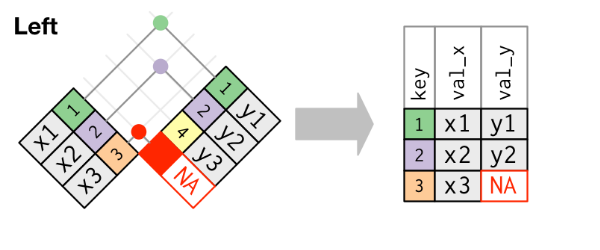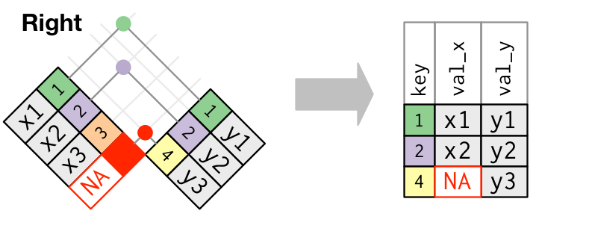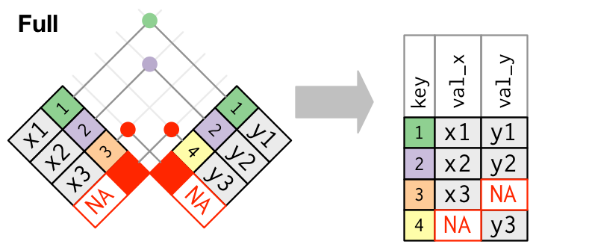The joins
Ben Baumer
Relational data
- Data from two or more tables that is related
- Need principled way to combine
Soon:
- Tidy data
- 3rd normal formLater:
- SQL
- Relational Database Management Systems (RDBMS)
- Keys and indicesExample: nycflights13
flightsairportsairlinesplanesweather
Keep like with like
# A tibble: 3 × 7
year month day flight origin dest carrier
<int> <int> <int> <int> <chr> <chr> <chr>
1 2013 1 1 1545 EWR IAH UA
2 2013 1 1 1714 LGA IAH UA
3 2013 1 1 1141 JFK MIA AA Connections between tables (ER model)

Be specific
An abstract example

Inner join
inner_join() returns all rows from flights where there are matching values in airlines.It returns all columns from both.

Left join
left_join() returns all rows from flights even if there are no matches in airlines. If no match then NA. It returns all columns from both.

right and full

All is returned, NA is filled in to missing data

Alternatively, but…

- This doesn’t capture the many-to-oneness
Many-to-one

Coding Example with
flightsairlines